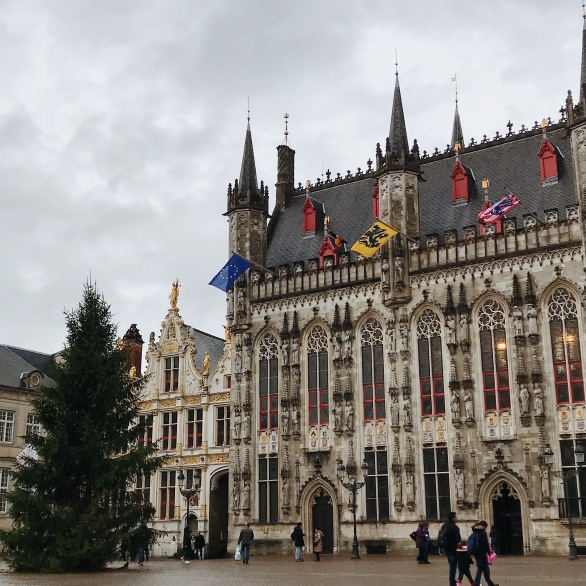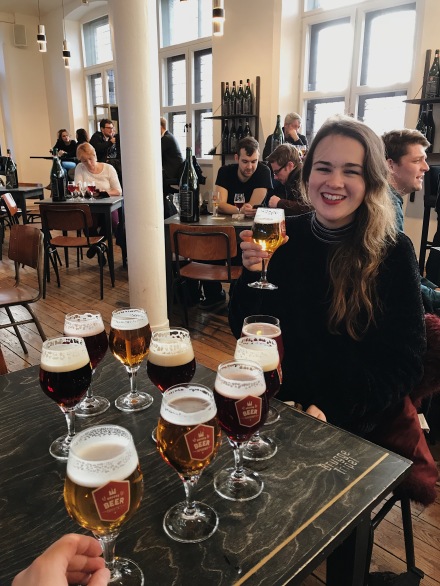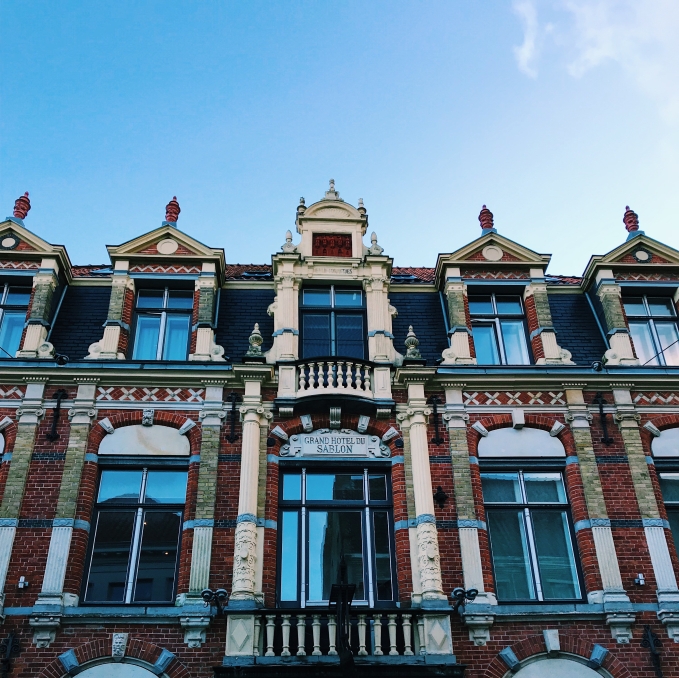Last year, in an ambitious quest to wow my boyfriend, I made the extravagant decision to take him on holiday for his birthday. Tickets to Bruges seemed reasonably cheap and I had heard on good report (and several google searches) that Bruges was going to be a fantastic holiday destination throughout the festive period. With this research in tow and the dread of Christmas in hospitality in mind, I booked the flights so that to Bruges we escaped.

Having been the financial capital of Europe throughout the medieval period, Bruges is a city that boasts an architectural ensemble like none other. Composed of colourful 19th century neo-gothic infrastructures and 13th century facades, this city truly illustrates its receptiveness to creativity during its influential peak. To say it is a beautiful city somewhat feels like the deepest of understatements. Posed ready with horse drawn carriages, scenic canals and twinkly Christmas decorations, we were transported to a fairytale filmset from which we never wanted to leave. Thankfully, we discovered that we actually couldn’t due to Ryanair cancellations…well, for one extra day at least.


The hub of Bruges’s charm – both past and present – is undoubtedly the Grote Markt. Once the site of a dominant port and warehouse, the Markt is now the proud home to the UNESCO Belfry tower and the Provincial Palace. Indeed, no matter how far you wander, no matter which street you take, you will always find your way back to this bustling beauty. Despite this being easy to blame on poor map reading skills, you’ll soon find that the markt actually is the centre of everything in Bruges. Back in 13th century Europe, Bruges was a commercial metropolis at the very heart of European art and trade. For this reason, Medieval street patterns such as main roads leading to important public squares are still prevalent in Bruges, and can often lead to a serious case of deja vu. This circularity, however, can be all too beneficial when locating the nearby historical attractions; including but not limited to the beer museum.


At the time of our visit, this historically seeped square was the site of a festive ice rink that, in my opinion, just oozed romance. With Christmas festivities in full force and the silhouettes of gothic brick buildings snuggling you in, the markt felt unquestionably alive and atmospheric. The style of brick gothic is one that is quintessential to the Flanders region and is one that creates an ambience of architectural wonder in Flemish cities. Having been a port city, Bruges was very much built from the soil up by merchant settlers. With winding canals and docks for mercantile traffic, the saddle roofed houses and warehouses on the waterfront press together like a fleet of ships at anchor. They are connected but noticeably different in size and stature. On an informative, yet, affordable canal tour, we learnt that this is due to the battle of prowess between rich merchant-prince’s of the time. These noble merchants became so obsessed with building taller and better houses than their immediate neighbours that, even, the archbishop had to intervene. Obviously, in an age of deep rooted christian beliefs, it was unfathomable to have a roof taller than the nearby church…never mind have walls thicker than the local castle.



Similar to the colourful (to be avoided) restaurants seen in the Markt, many of the residential houses in Bruges’s city centre have high gothic facades and crow stepped gables. During the 15th century it was typical of flemish houses to use “the curtain wall” effect i.e. the front wall is made deceivingly taller than the building it hides. This was a clever ploy by those that wanted to exert prestige without committing to the expense of a truly big house. Amusingly, however, architects carried on building these facades and gables for almost five hundred years after they went out of fashion because, along with “French” fries, they became quintessentially flemish and undeniably iconic. These authentic coloured buildings – a tentative incorporation of the flemish renaissance – act as a satisfying juxtaposition to the grand neogothical Provincial Palace in the Markt. The provincial palace is nothing other than majestic. Accentuated by the horse drawn carriages littering its front yard this example of 19th century gothic revival is like everyone’s fantasy castle realised. I felt like a princess just walking outside.
And so, it was with a heavy heart and an even heavier bag of chocolate that we eventually boarded our plane back to Manchester. Perhaps it was the magic of Christmas, perhaps it was the magic of Belgian beer but Bruges cast a spell over us that will be impossible to forget. With streets that feel like theme park locations and buildings that feel like storybook houses, there is one thing I will always know… and that’s, actually, there is nowhere quite “like” Bruges.





